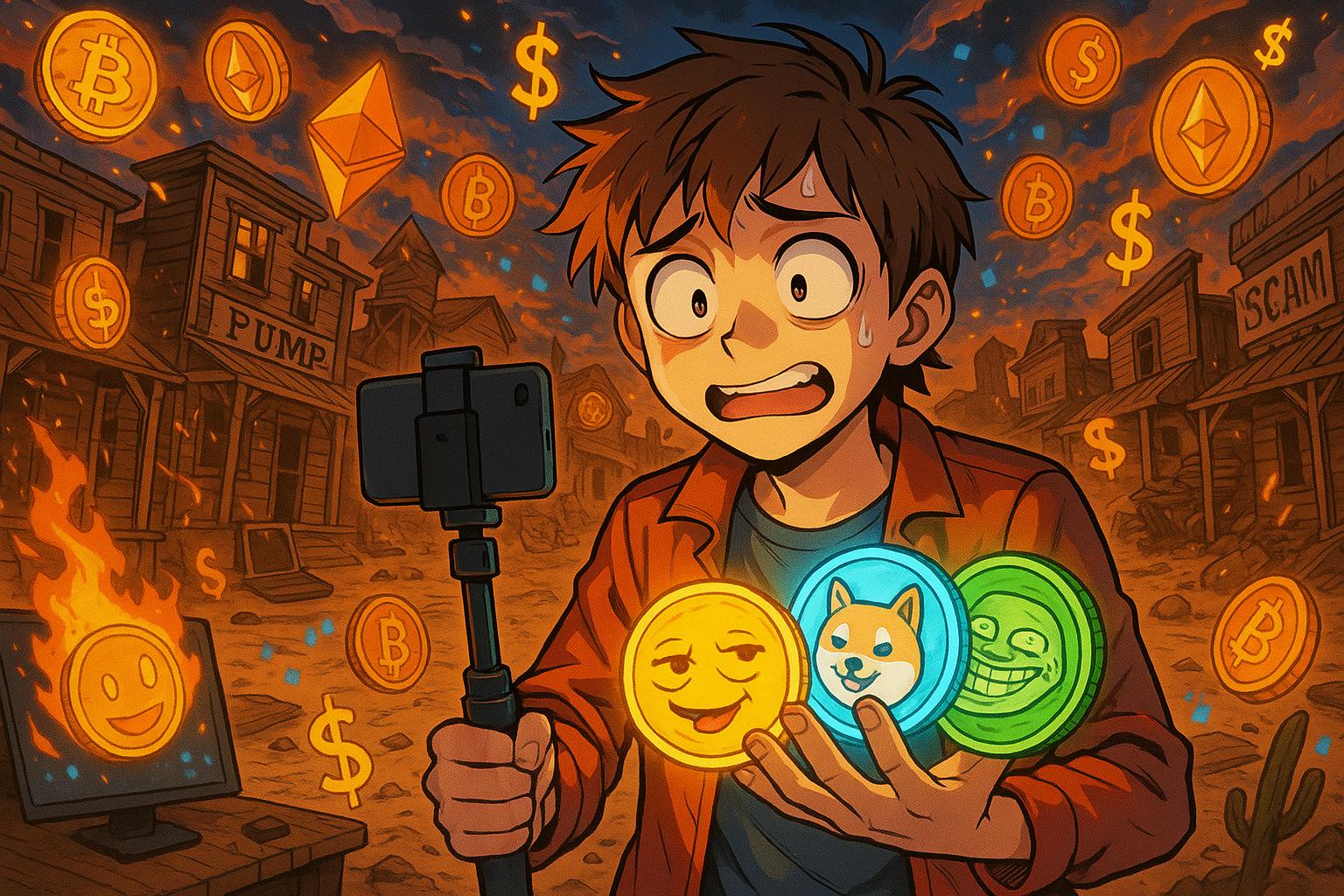The cryptocurrency landscape has become an enticing frontier for many, but it is also fraught with risks, particularly for impressionable teenagers and young adults. As cryptocurrency titans promote seemingly easy pathways to wealth, the reality is more akin to the financial Wild West, where regulations are few and diamonds in the rough are rare. The lure of getting rich quickly through meme coins—a type of cryptocurrency typically tied to popular culture or internet trends—has become a prevalent theme, with influencers touting them as golden opportunities, often without adequate warning about their speculative nature.
Many of these meme coins, according to a study by a crypto security firm, Blockade, are nothing more than scams. A staggering 76% of meme coins promoted by influencers on social media platforms have fizzled out, with about 80% losing 70% of their value within the first week of trading. This alarming data underscores the financial peril faced by those who invest based on the glossy promises of influencers, who frequently prioritise personal gain over the well-being of their followers.
One of the most infamous figures in this dubious realm is Sahil Arora, who has reportedly launched over 100 meme coins, describing his approach as a way to exploit the system to his advantage. "The easiest way to make money is to deploy a meme coin, run it and then sell as soon as you see [profits]," he divulged. Such practices can involve a tactic known as “rug pulling,” where creators artificially inflate the price of their coins to attract unsuspecting investors, only to pull their investment and leave them with worthless tokens.
Arora unashamedly embraces this reputation, likening his operations to the largest casino on Earth, and among his contemporaries are other notable influencers like Paul “Ice Poseidon” Denino and Faze Kay, who have faced accusations of promoting potentially harmful meme coins. Denino, for example, was implicated in a controversy where he left followers high and dry after cashing out on a project. He maintained that his profits were not taken from any fans or investors, a claim many would find hard to accept in light of the substantial loss suffered by those who followed his lead.
The ethical vacuum in this sphere is alarming. While social media influencers can amass fortunes through such promotions, they seldom disclose the financial ties they have to the projects they endorse. Kyle Chassé, a veteran crypto investor, lamented, “It should always be disclosed that these people are being paid to promote the coin. But not everybody has the moral compass to do that.” This lack of transparency erodes trust and can result in significant financial losses for naive investors.
Moreover, the transient nature of meme coins and the aggressive marketing strategies used to promote them exploit investors' fear of missing out (FOMO). Prospective investors are often promised rapid gains and the potential for dramatic returns, which can create a harmful cycle of speculation and loss. Those who invest on the basis of influencer endorsements typically see little in the way of lasting value, as the hype quickly dissipates, leaving them with little more than a painful lesson.
The legal landscape surrounding these practices is evolving, as regulatory bodies begin to scrutinize the actions of influencers more closely. There are potential repercussions for those found promoting scams, ranging from hefty fines to criminal charges for more serious infractions, including insider trading. However, the enforcement of such regulations remains a complex issue, often lagging behind the rapid evolution of the cryptocurrency domain.
Yet amidst this chaos, genuine projects like Bitcoin and Ethereum continue to offer a more stable investment alternative, albeit not without risk. Investors are increasingly urged to exercise due diligence. Glenn Titus, a butcher from Oregon who has lost substantial sums in meme coins, commented, “People [online] make it sound good, and the price keeps going up. Then suddenly you can’t sell what you have.” His experiences serve as a sobering reminder of the pitfalls that await unwary investors.
In a climate rife with deceit, potential investors must, as Chassé advises, scrutinise those flashing their wealth and consider the source of their success. As the cryptocurrency world continues to mature, both individual responsibility and regulatory accountability are essential in navigating these treacherous waters—after all, while some see it as a new form of entertainment akin to gambling, in the crypto casino, it is often the house that walks away with the winnings.
Reference Map
- Paragraphs 1, 2, 3, 4, 5, 6, 7, 8, 9
- Paragraphs 2, 3, 5, 6
- Paragraphs 4, 6, 7
- Paragraphs 7, 8
- Paragraph 2
- Paragraph 6
- Paragraph 8
Source: Noah Wire Services
